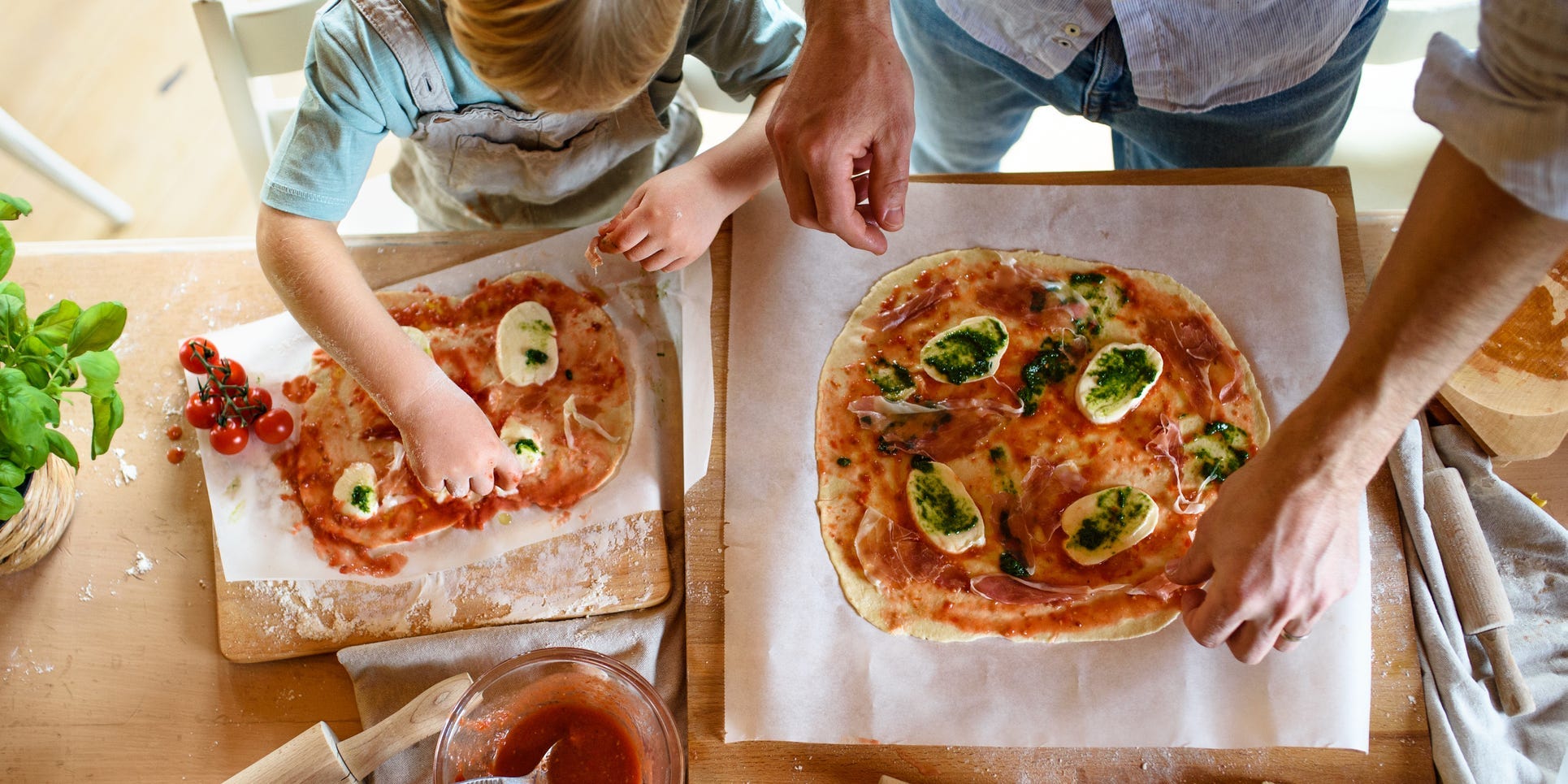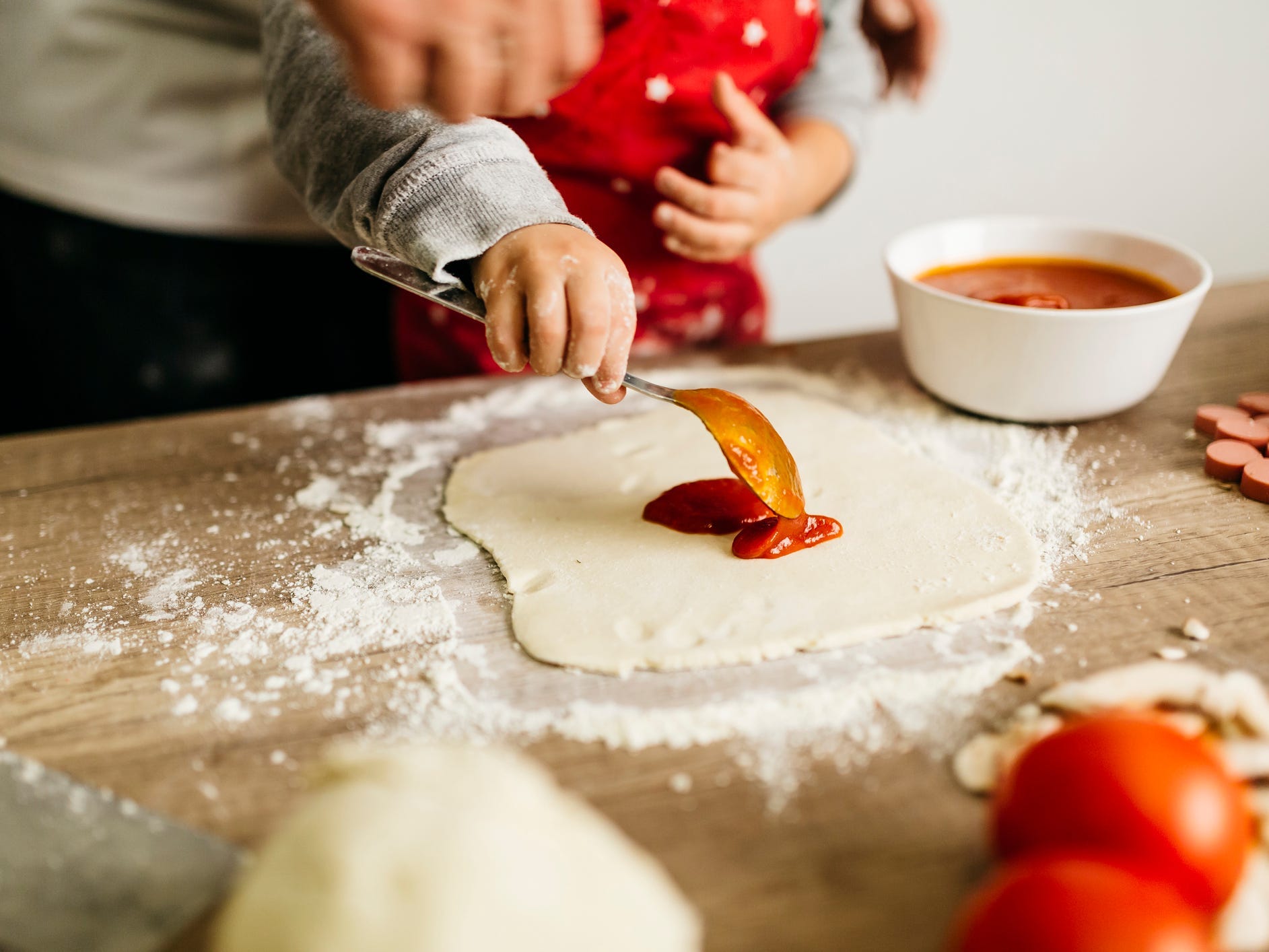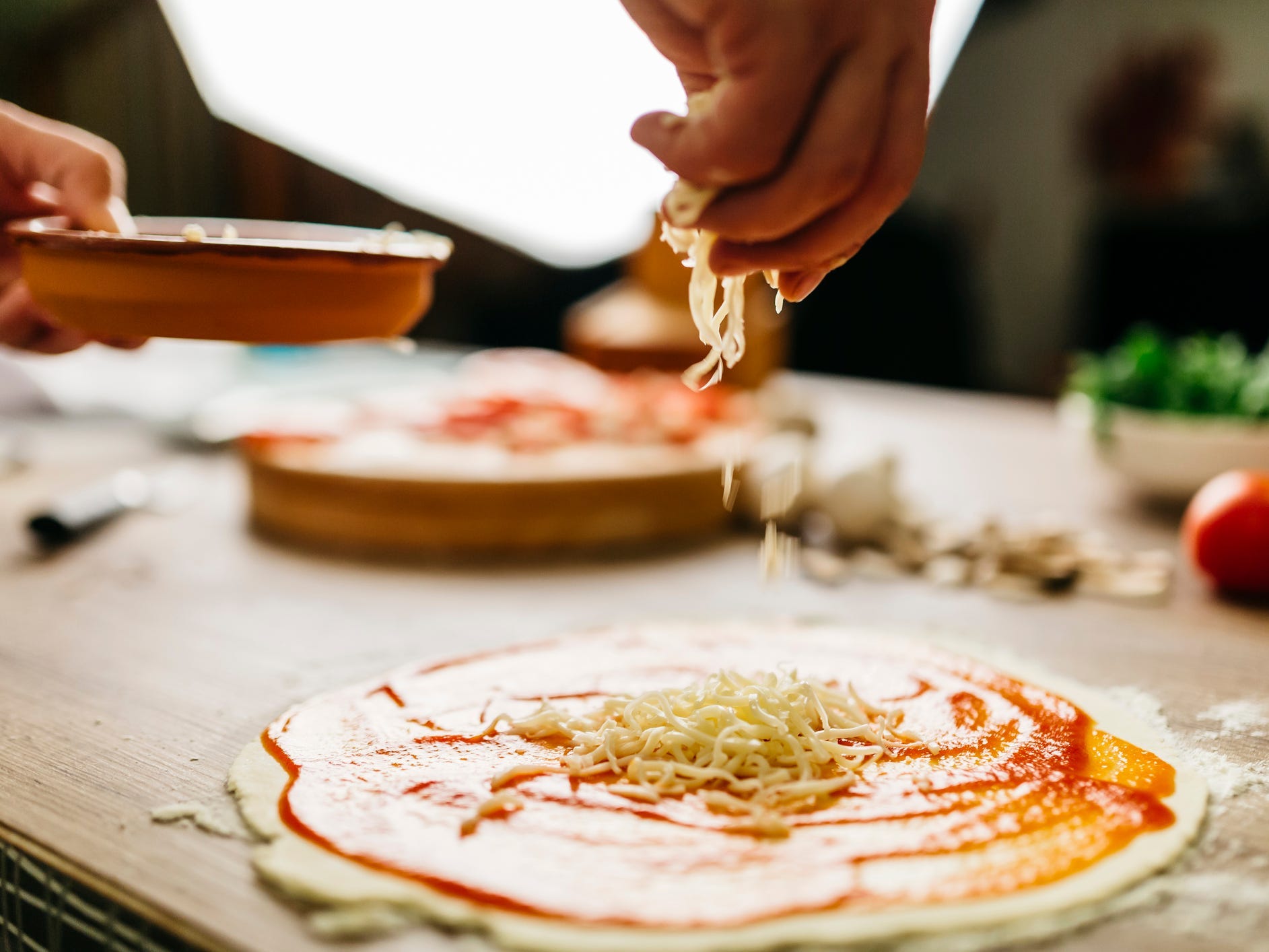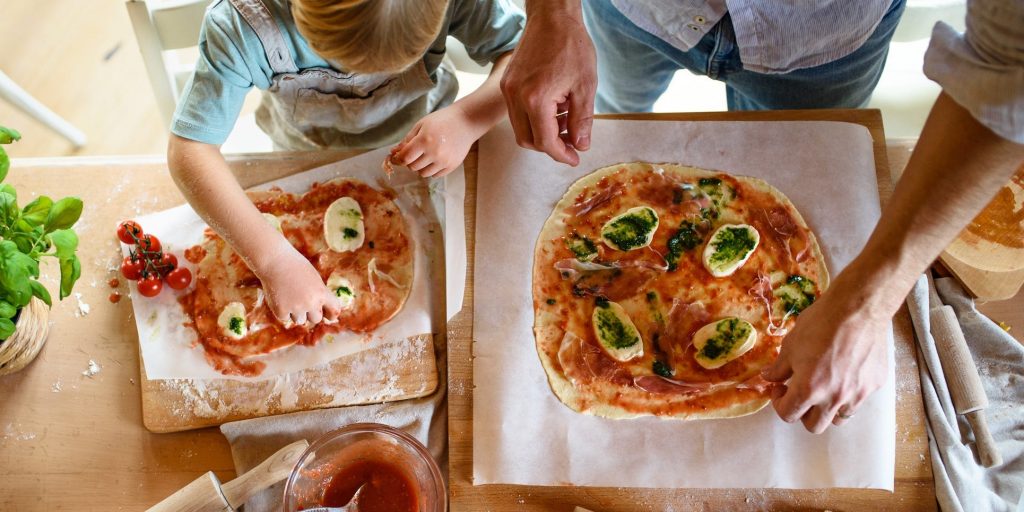
Halfpoint Images/Getty Images
- The hardest part of homemade pizza is taking the time to make a great dough.
- Making your own pizza sauce is easy and worth it for a brighter, fresher flavor.
- Mix your dough gently and allow enough time to proof for an artisanal pizza at home.
- Visit Insider's Home & Kitchen Reference library for more stories.
Making pizza at home can be a fun activity with your partner or the whole family. The variety and combination of toppings is endless and each person can personalize their pie. At Lock & Key in Los Angeles, Chef Tony Hernandez serves three different types of pizza: Chicago deep dish, New York-style thin crust, and Sicilian-style pizza with a sourdough crust.
Hernandez shares his dough-making and baking tips, so you can make a pie that looks like it came straight out of an artisanal pizza shop.
Below, we break homemade pizza down into each of its components: dough, sauce, cheese, and toppings, making it easy to master at home.
Make your pizza dough
There are so many different styles of pizza, and many different types of flour can work for pizza dough depending on your preference. Superfine 00 flour is best for Neapolitan-style pizza, and Hernandez recommends it for a chewier bite. While all-purpose flour won't create a dough that's quite as stretchy, it will result in a crispier crust. Quad Cities-style pizza includes malt in the dough for a sweeter, nutty flavor.
Select your sauce

Westend61/Getty Images
Hernandez recommends making your own sauce using fresh ripe tomatoes, assuring that it's a lot less complicated than it seems. But if you are short on time, he says canned tomato sauce works too. "If you use traditional tomato sauce from a can, add herbs like basil, parsley and oregano to give it a little extra flavor," he says.
Choose your cheese

Westend61/Getty Images
Mozzarella is the most popular cheese for pizza for its simple, pure flavor that plays well with other ingredients as well as how easily it melts. But the sky's the limit, so feel free to experiment.
"I have used everything from Monterey jack, cheddar, and fontina to manchego, asiago, and truffle-infused cheese," Hernandez says. Grated cheese will yield a more evenly covered traditional pizza, whereas torn pieces of fresh mozzarella or any other cheese will create pockets of cheese.
"Most cheeses will melt so the texture is going to be soft, but you can use dry-aged cheese, like Parmesan or Grana Padano to garnish your pizza once it's out of the oven to get a different texture," he says.
Pick your toppings
Classic pizza toppings include pepperoni, sausage, garlic, mushrooms, basil, and spinach. Hernandez recommends playing around with creative flavor combinations at home - maybe roasted cauliflower with tahini or blue cheese with figs and caramelized onions.
Begin with a thin layer of sauce - too much sauce can make your crust soggy. "Put cheese evenly on top of the tomato sauce," Hernandez says. "After that, you can add the rest of your toppings, including any vegetables or meats."
Insider's Takeaway
There are many different types of pizzas and pizza doughs, but for a simple pizza at home, use bread flour or all-purpose flour. Mix your water and flour gently with a touch of honey and olive oil to make the dough, and let your dough rest and refrigerate it overnight and for up to 48 hours. Then pull it out to temper at room temperature before the final shaping and baking. It's worth it to make your own sauce with flavorful tomatoes, and have fun with the cheese and topping combinations you choose. Depending on how crispy or soft you like your crust, you can bake your pie for longer or a shorter time at a higher temperature.
